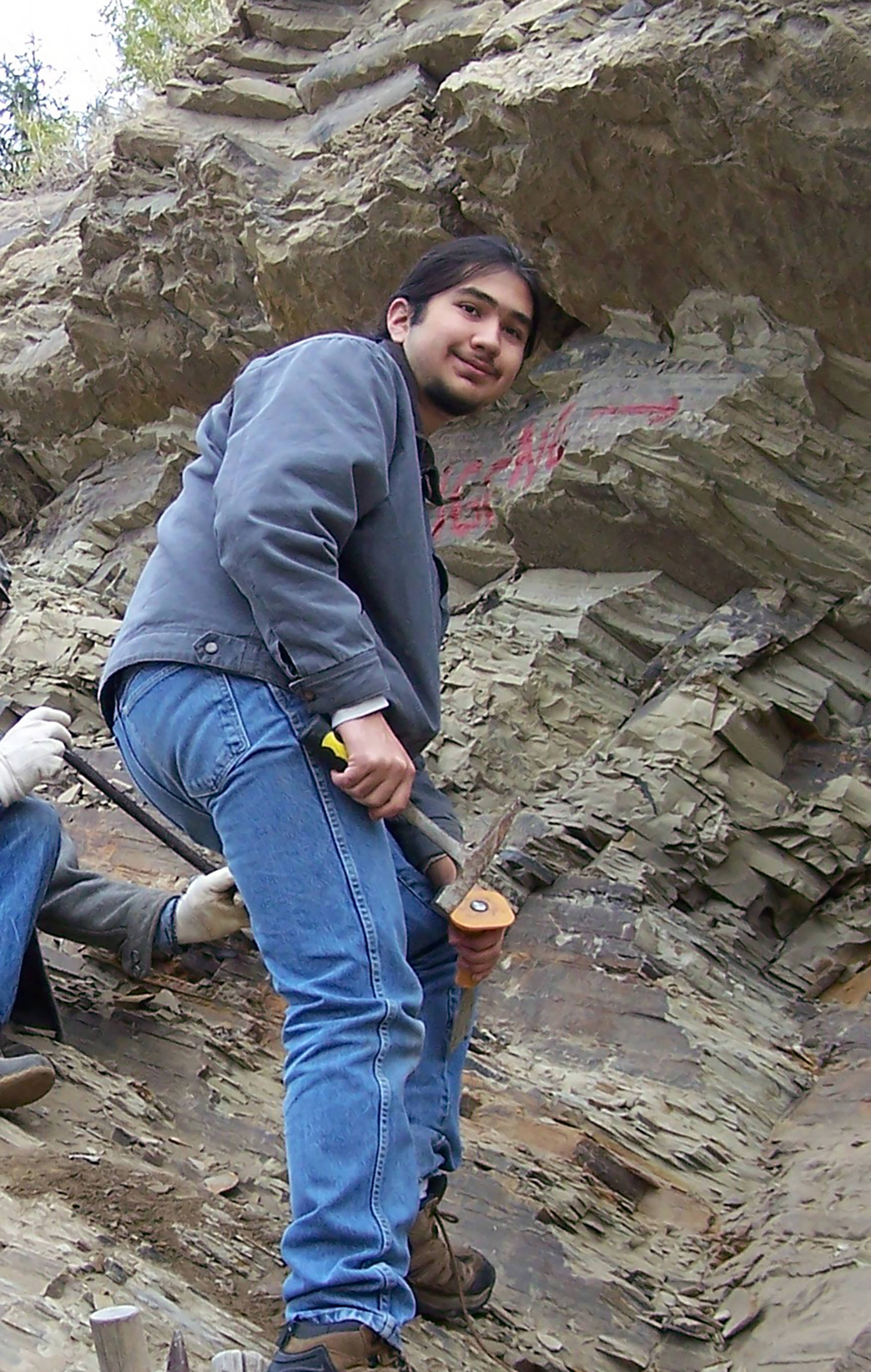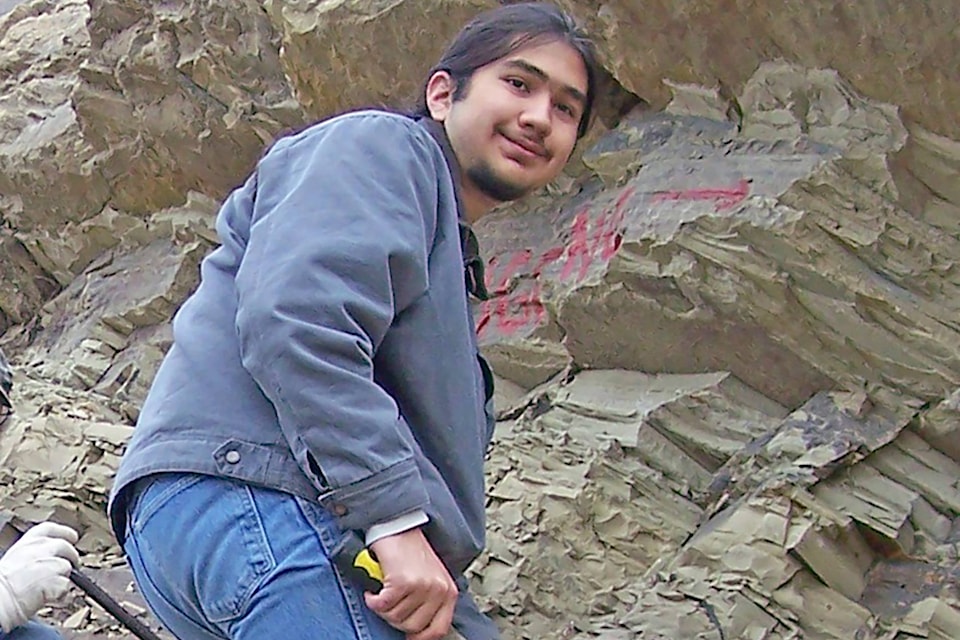Simon Fraser University (SFU) paleontologist Bruce Archibald is known for his rare fossil discoveries, but his collaborative work with Indigenous groups, and the relationships he forges, are equally special to him.
When Archibald found a lacewing fossil on the traditional land of the Wet’suwet’en people near Smithers, he consulted Wet’suwet’en Elders for advice on naming the new species.
The Elders provided the word sanikwa in their language. Archibald and his Russian co-author named the species Archaeochrysa sanikwa, reflecting the Wet’suwet’en connection to the land, its life, and ancient history.
“The importance of remains such as this is that this shows the evolution of species since the time that this land was created for the Wet’suwet’en,” said Chief Na’Moks.
Archibald was working on fossil insects at the Stonerose fossil site in Republic, Washington when he first met Daniel Moses.
“I was impressed that this talented young boy was so interested in my work and I encouraged his curiosity and watched it grow over the years,” Archibald said.
Moses, a member of the Colville tribe, was only five years old when he discovered his first fossil at the site near his home in Washington State. He is now completing graduate studies at Arizona State University, specializing in the relationship between fossil insects and plants.
“Bruce was there since the beginning,” Moses said. “He helped foster my love for fossilized insects. Most kids had a rock star that influenced them somehow; I was fortunate to have one who was both a rock star and a paleontologist.” (Archibald spent part of his youth as a musician.)
Moses also credits paleobotanists Kathleen Pigg and Melanie DeVore, from Arizona State University, with influencing his passion for how these insects interacted with ancient plants.
His mother, Judith Moses, hopes her son will someday pay it forward and be the role model that her community needs.
“The curiosity about fossils has always been there, as evidenced in the myths around their creation,” she said. “But it’s important to understand that one of the reasons Native Americans are under-represented in the areas of geology and paleontology is that they grow up not seeing anyone like them in those fields and so they think it’s not possible or so hard that it isn’t worth it.”
Azure Rain Belgarde is another Indigenous youth who has benefited from Archibald’s ethos. She discovered a rare fossil when she was on a school field trip to the Stonerose site. Working with a colleague in Germany, Archibald eventually confirmed that her discovery represented a new species of a big-headed fly that they named Metanephrocerus belgardeae in her honour.
“I didn’t expect them to name the fossil after me but when I found out, I was stoked,” Belgarde told the Tribal-Tribune,
Archibald strives to recognize the Indigenous communities that have been essential to his findings. When he discovered a new family of beautifully-coloured insects related to dragonflies on the traditional lands of the Confederated Tribes of the Colville Reservation, he tasked Daniel Moses with asking his Elders for a name in their language. The new insect family is now known as the Whetwhetaksidae, after the word whetwhetaks, which means “dragonfly-like insects.”
“By bringing our Elders in on the decision of what to call it, they feel that we are acknowledging their history with these insects, fossils and traditional lands,” Judith Moses said. “So much of what we have learned about this area scientifically corresponds to what they have always said.”
Besides naming rights, Archibald is keen to share his discoveries with the communities where he has discovered them. He has given talks to the councils of the Skeetchestn and Bonaparte bands in B.C., and the Colville Tribal school in Washington.
Searching for fossils in the traditional territory of the Upper Similkameen band has led to a close relationship with band members and administrators.
“Dr. Archibald has developed a relationship with the Upper Similkameen Indian Band over a number of years through collaborative field work, information sharing and developing an understanding of paleontology resources in the Upper Similkameen Traditional Territory,” said Robin Irwin, the band’s natural resources director.
Archibald acknowledges that building relationships is essential to his work.
“I have a responsibility to share what I’ve found on traditional territories, and working with Indigenous communities also gives me an opportunity to understand what these fossils represent to them. I hope that we both learn from each other. That makes us all stronger.”
Daniel Moses credits Archibald for his work bridging the two communities.
“Aboriginal people developed a deep and detailed understanding of the natural world. They observed the differences in the life forms and natural phenomena around them, defined them and named them. Through repeated experimentation, they found application for them. Dr. Archibald’s commitment to work with our Native American elders in order to honour that ancient tradition not only reconnects us culturally to the past but inspires the future.”
As for Daniel Moses, Archibald says the future looks good.
“He’s going to be a fine paleontologist who I’m sure will make important contributions for all peoples.”
Diane Mar-Nicolle is the communications officer for the Faculty of Science at Simon Fraser University

